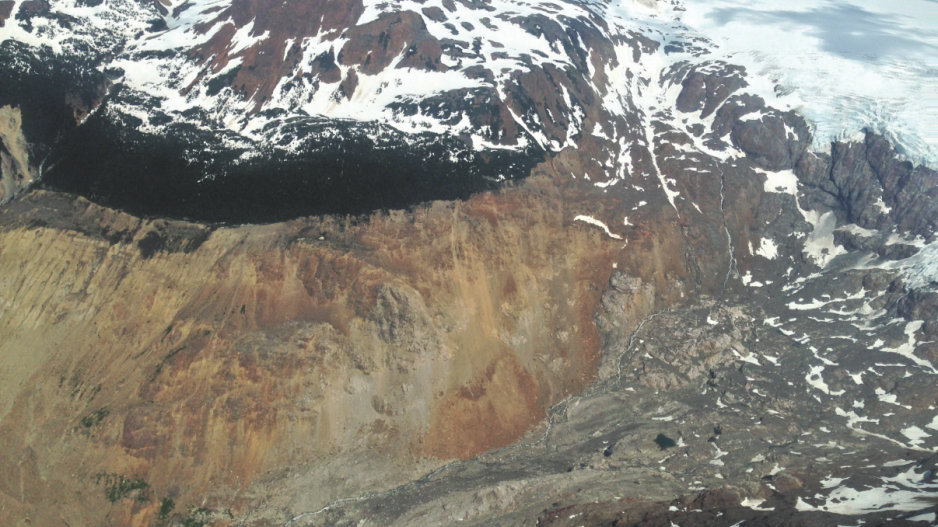Researchers who have been able to study frozen mammoths and Stone Age mummies thanks to retreating glaciers aren’t the only scientists who have benefited from the otherwise negative impacts of global warming.
Melting ice has also made it easier for geologists in B.C. to prove known mineral deposits through exploratory drilling that could not have taken place 40 or 50 years ago.
Gwenn Flowers, Canada research chair of glaciology at Simon Fraser University, said there were 30,000 square kilometres of glacial ice in B.C. in the 1980s, which represented 20% of the non-polar ice in Canada, and 4% globally.
Ten per cent of that ice has melted since the mid-1980s, she said. In recent decades, some glaciers have retreated as much as two kilometres. The Red Mountain underground gold mine near Stewart is one of a handful of new mines being proposed for deposits that only became viable in recent decades, thanks to retreating glaciers.
“Due to global warming, the glaciers and ice fields have been melting and retreating at a tremendous rate,” said Rob McLeod, CEO of IDM Mining Ltd. (TSX:IDM), which hopes to turn the Red Mountain gold deposit near Stewart into a new underground mine.
“One of benefits of that is you get all of this geological exposure that has never been prospected. I can point to at least three significant discoveries just in the past five or six years.”
One is the Brucejack underground gold-silver mine that Pretium Resources Inc. (TSX:PVG) is proposing to build near Stewart.
McLeod also points to the Seabridge Gold Inc. (TSX:SEA) KSM mine in the same area – touted as the largest undeveloped gold-copper deposit in the world.
KSM is an acronym for three distinct deposits: Kerr, Sulphurets and Mitchell. McLeod was involved in exploration work there in the late 1980s when he was still a geology student.
“The Mitchell zone, that was located under ice in the ’80s,” he said. “It was only when Seabridge came back six or seven years ago that it had melted out from under the ice.”
Although some of the deposits now being developed into mines were known to have good mineralization, glacier coverage made it difficult to do the exploratory drilling needed to prove out a deposit.
“The fact that a deposit is partially covered by ice at any particular time would be probably of less concern than the fact that you are exposing new mineral showings, so enhancing the potential of the deposit,” said Mickey Fulp, who publishes the MercenaryGeologist.com.
“Generally, that whole area has undergone this enhancement in terms of [prospecting], if you will, because of retreating ice.”
He added the same opportunities for exploration and mining created in B.C. by retreating glaciers also exist in Alaska, northern Chile and Greenland.
Although retreating glaciers present an upside to global warming, at least for mining, they also pose some problems, Flowers said.
One is the effect on runoff. Glaciers retard the annual melting of snow and ice, so when they shrink, the annual runoff is much more variable. That could have an effect on tailings ponds, she said.
“The variability of runoff is likely to be higher when these glaciers disappear,” Flowers said. “You may be measuring runoff that’s happening now that, when this glacier retreats further and disappears, is not even going to exist in the future.”
Another potential problem is that retreating glaciers leave behind lakes, and the till that contains them can be unstable, so any mine below it could be vulnerable to flooding, should it breach.
“So if your infrastructure is downstream of this glacier, there are hazards that present themselves when the glaciers retreat,” Flowers said.
“I’m personally hard-pressed to see any of the benefits of glacier retreat, unless you are looking for an ore deposit to be easier to access, but I almost think that the complications that come with changing the glacial conditions in the basin offset those benefits.”




